[Editor’s note: This article runs in a new section of The Tyee called ‘What Works: The Business of a Healthy Bioregion,’ where you’ll find profiles of people creating the low-carbon, sustainable economy we need from Alaska to California. Find out more about this project and its funders.]
The citrusy smell of sawdust is pungent upon entering the Timber Tiles workshop in Port Alberni. Founded in 2020, the startup makes decorative, waterproof wooden tiles that can be used in kitchens, bathrooms and pretty much any other place you’d find traditional ceramic tiles.
Mark Anson, architect and co-founder of Timber Tiles, said his company offers a compostable alternative to climate-harming ceramic tiles, which are manufactured through a carbon-intensive process and often end up smashed in landfills.
“It’s about education and getting our story out there to designers and architects,” Anson said over the phone from Gibsons Landing, where he’s mid-construction on a home that will showcase Timber Tiles and be built to multiple green building standards.
That story took a vital turn last year when Huu-ay-aht First Nations on Vancouver Island became majority owner of Timber Tiles, finding it a good fit with the community forest it manages on its territory.
“This offers an opportunity to close the circle by getting involved in the value-added end of the business,” explained Huu-ay-aht elected councillor Evan Cook at the time.
Timber Tiles is coming to market amid a global push to cut the construction sector’s emissions. From the manufacturing and transportation of materials to construction to heating and cooling, buildings account for nearly 40 per cent of global greenhouse gas emissions. Within these buildings, and caught in regulators’ crosshairs, is the ancient art of ceramics.
Archeologists have unearthed ceramics dating back to at least 24,000 BCE in eastern Europe and 8,000 BCE at Tell Aswad, a prehistoric site in the Middle East near Damascus. These days, modern ceramics include decorative tiles, roofing, artificial joints and brake pads, and are part of a global industry expected to be worth US$415 billion by 2025, according to a 2022 study published in the journal Renewable and Sustainable Energy Reviews.
Still, it remains a dirty business. The energy-hungry firing process, which occurs in mostly natural-gas-burning kilns that reach temperatures in excess of 1,000 C, accounts for two-thirds of the sector’s emissions. Off-gassing from the natural sintering of the raw materials of ceramics, typically limestone and dolomite, is another source of greenhouse gases.
In 2012, a team of Chinese researchers examined China’s tile industry, the largest producer in the world. They found that, in 2007, it emitted 100 million tonnes of carbon dioxide from the production of 50 billion cubic metres of ceramic tiles. Similarly, the European tile industry, worth an estimated US$31 billion in 2022, generates 19 million tonnes of CO2 annually.
Manufacturers are feeling the heat from the European Union. As part of its Paris COP21 commitments, the EU has mandated that all industries cut their emissions by 55 per cent below 1990 levels, with the goal of reaching net zero by 2050.
That means tile makers must rapidly pivot from fossil fuels to other sources of energy, such as biogas, green electricity or hydrogen, if they have any hope of reaching that target in 25 years. Or, as Anson hopes, buyers could pivot to wooden tiles.
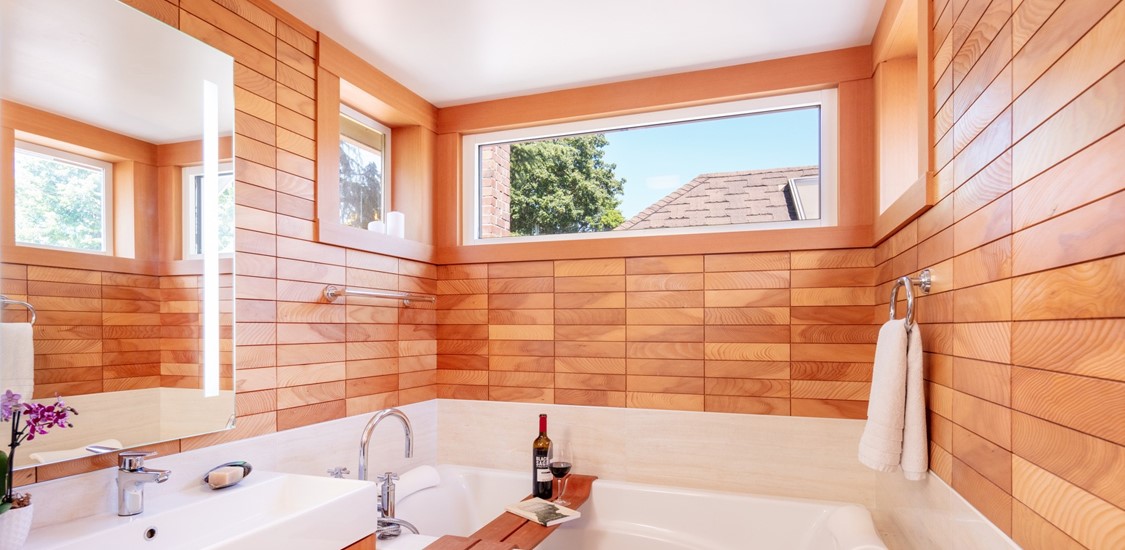
The idea of crafting tiles from wood had its genesis a decade ago when Anson was working as a researcher at FPInnovations, a non-profit dedicated to researching Canada’s forest sector. One project he was involved in explored new uses for lower-grade hemlock, a typically undervalued wood due to its high moisture content.
At the time, FPInnovations was collaborating with Western Forest Products’ Alberni-Pacific Division sawmill. Their goal was to develop economically viable forest products from hemlock lumber that was emerging from the company’s kilns too wet to sell.
“We tried making all kinds of things, including tiles,” Anson said.
In 2017, Anson took some sample tiles from the project to the Interior Design Show Vancouver and received a positive response.
However, the tiles would go on to sit on a shelf for a few years, until COVID-19 hit and Anson lost his job at FPInnovations.
In 2020, Anson took a leap of faith and got a second mortgage on his family home. He partnered with his former colleagues Dave Dempster and John Hoffmann to found ReaplyWOOD Design and Research Inc., the launching pad for Timber Tiles.
The trio bought a vacant, two-floor industrial warehouse in Port Alberni and set about renovating it and equipping it with tools.
At FPInnovations, Anson had already helped develop the wooden tile-making technique. It begins by sawing a four-inch-by-four-inch chunk of hemlock on an angle into smaller pieces. These odd-angled pieces are then glued together to form a new laminated four-by-four. After the wood is dried, it’s milled into rough strips, cut to length, planed, sanded, treated with wax and cured using a UV treatment.
On paper, it seems like a cumbersome process, but it has important outcomes.
“Cutting on an angle allows us to efficiently dry and finish the tile. It also reveals the beautiful grain and texture of the wood in a new way,” Anson said.
During the research and development phase, the trio also designed custom machines for their manufacturing line to accompany readily available industrial thickness planers, saws and sanders.
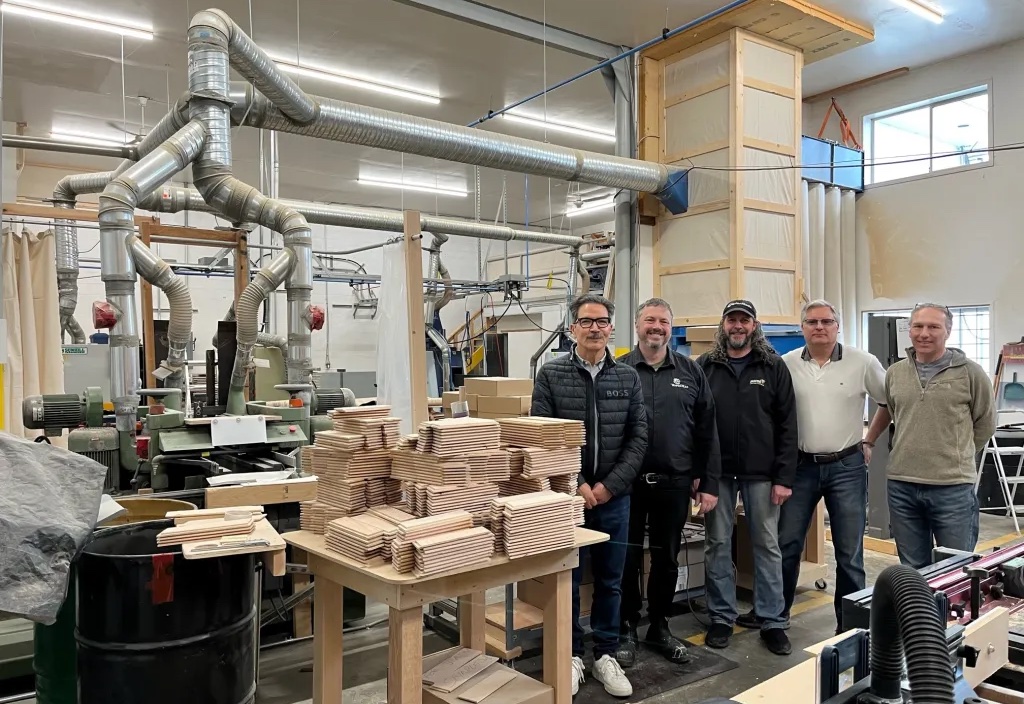
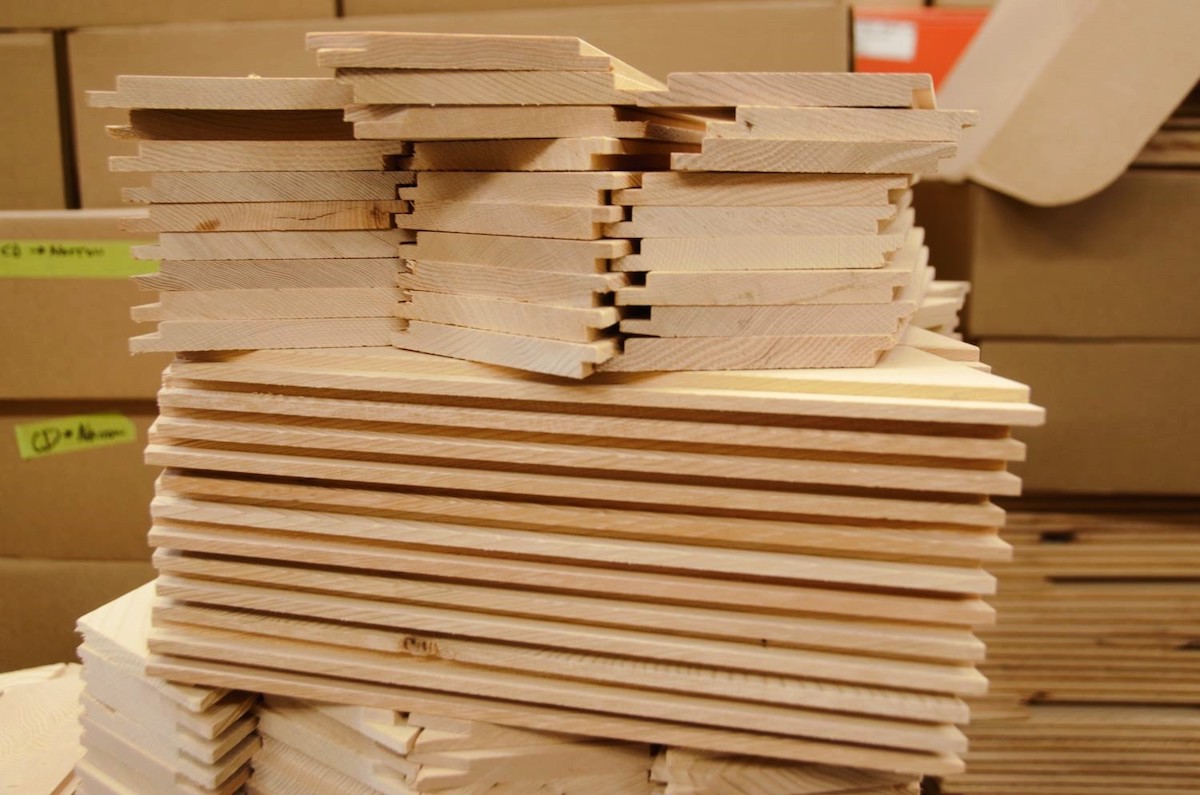
After six years of research and development, Anson and his partners felt the manufacturing process was dialed in and capable of cranking out finished tiles at a rate of four per second.
They were also confident they had a product that was durable, hydrophobic, versatile, easy to install, attractive and eco-friendly. Yet they soon learned penetrating the tile market and earning the confidence of distributors, interior designers and architects was akin to pushing a boulder uphill.
In 2022, Timber Tiles suffered a setback when the Western Forest Products mill it relied upon announced its closure.
“We had basically run out of money and our source of wood fibre,” Anson said.
Timber Tiles needed a lifeline and a secure source of fibre. So, Anson approached Huu-ay-aht First Nations as a potential owner. Based in Anacla, a community on Pachena Bay near Bamfield, the nation manages a First Nations woodland licence, community forest, treaty settlement lands and a 33 per cent interest in WFP’s Tree Farm Licence 44.
Patrick Schmidt, CEO of the HFN Group of Businesses, said the fit was right because the Huu-ay-aht have plenty of hemlock on their tenure lands and the business meshed well with their “sacred principles” of respect, stewardship and interconnectedness.
In April 2023, the First Nation bought a 75 per cent stake in Timber Tiles, with ReaplyWOOD retaining the remainder. Anson was named CEO of the company, which was relaunched under the name HFN Timber Tiles LP.
Schmidt, who has led the HFN Group of Businesses for six years, said Timber Tiles is a small piece of the First Nation’s portfolio, but an important one.
“The Huu-ay-aht are looking for value-added opportunities for hemlock. It’s an underutilized species,” Schmidt said. “And I think the timing is right because of the pressure to decarbonize the construction sector.”
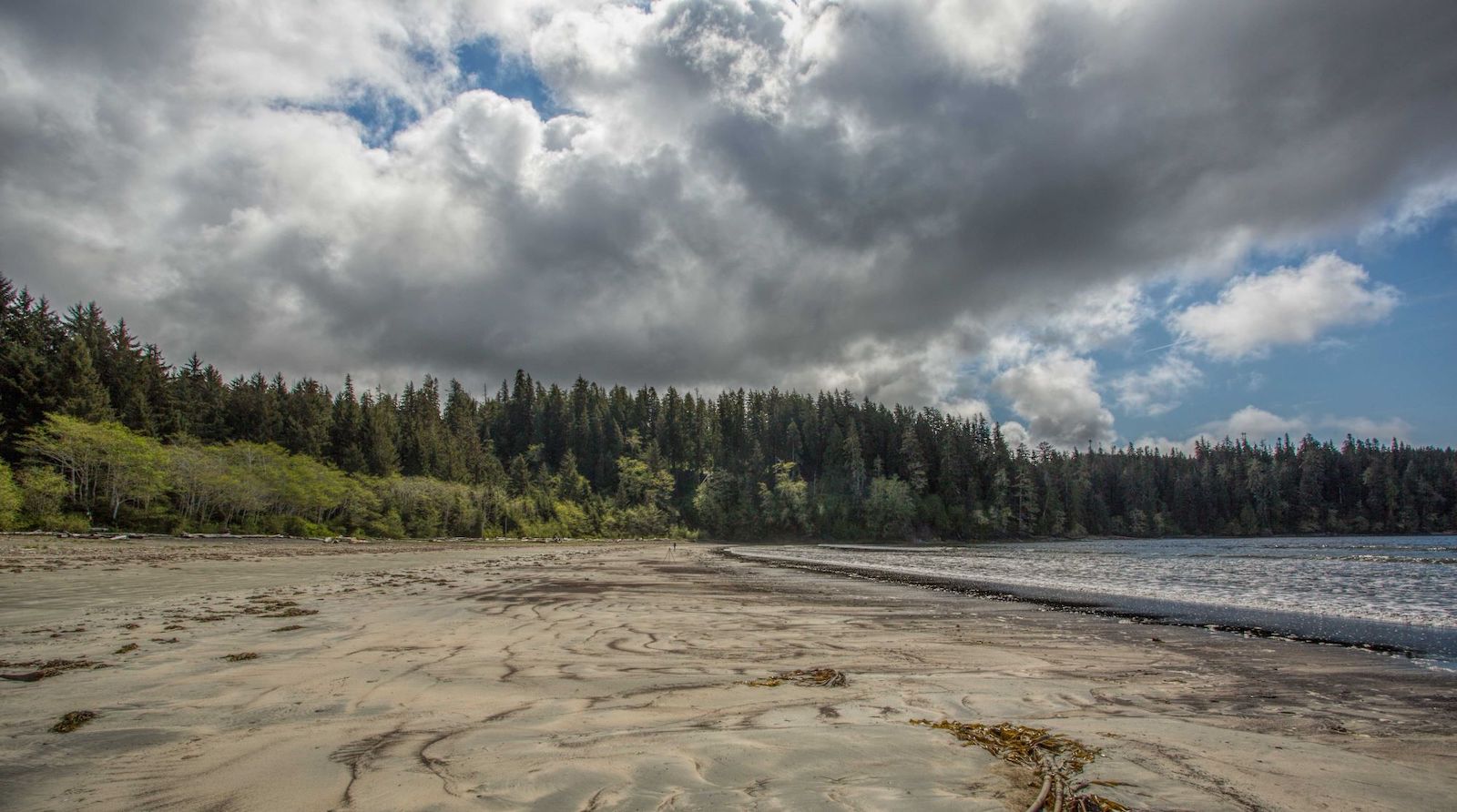
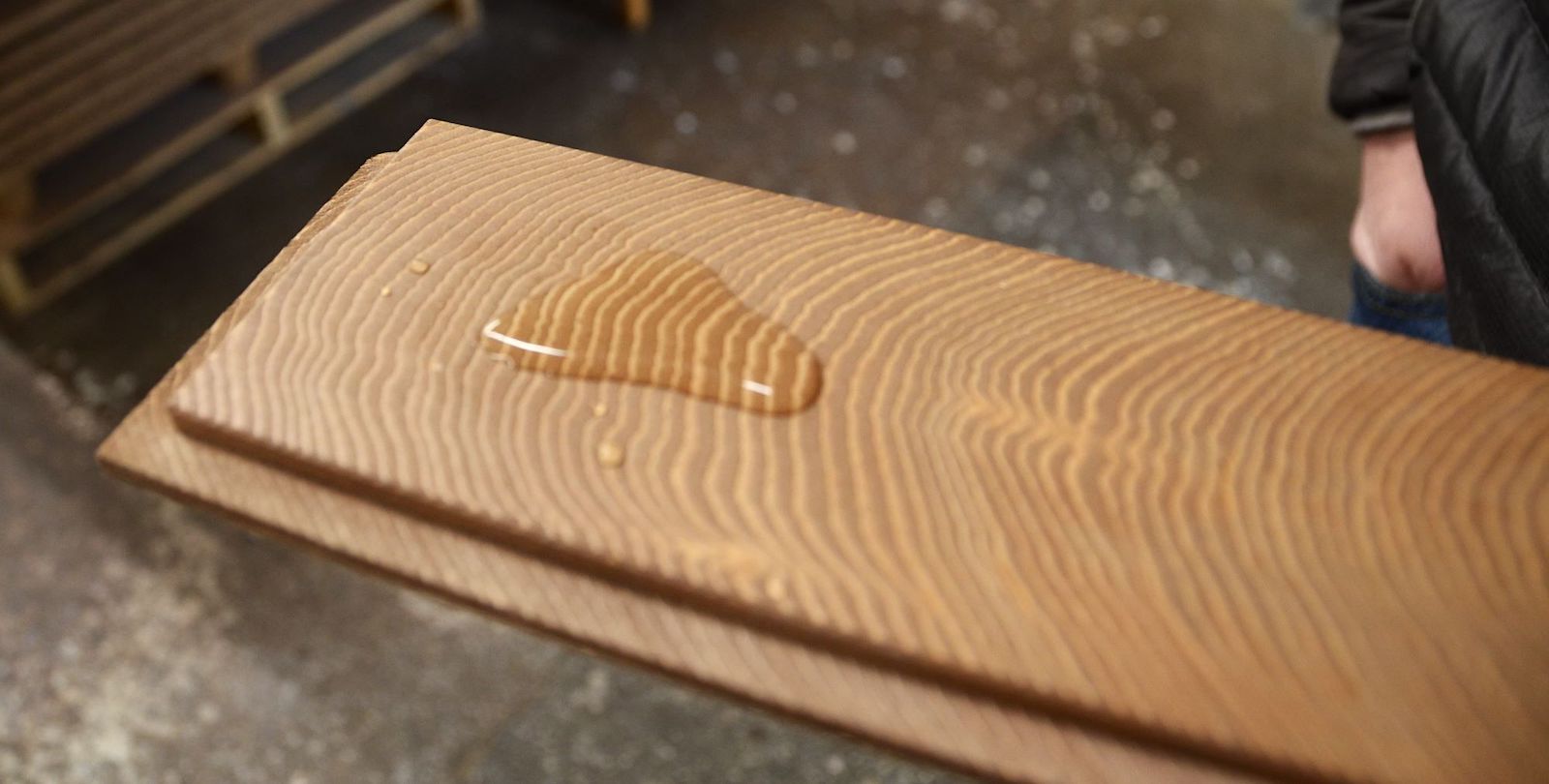
On an overcast day in February, Schmidt unlocked the door at Timber Tiles, located a few blocks uphill from the shuttered WFP mill that’s now in a state of decay and deconstruction.
The machines lay idle, but a fresh coating of sawdust on the floor of the workshop was evidence of recent activity.
Earlier this year, the small company completed its first order for Mihasi Co. Ltd., a large Japan-based distributor and manufacturer of crown moulding and other decorative finishing materials. Timber Tiles now has a distribution agreement with Mihasi. It’s a minor coup considering, so far, market penetration has been modest at best.
Timber Tiles’ product is featured in the foyers of five FrontCounter BC offices and in the bathrooms, kitchens, living rooms and bedrooms of a handful of custom homes on Vancouver Island and the Lower Mainland. Recently, the wooden tiles were installed on the ground-floor concrete walls of oN5, a four-storey commercial building in Mount Pleasant designed by Hemsworth Architecture as a demonstration project for mass timber, or cross-laminated timber construction.
Dean Shwedyk, lead architect for oN5, said the tiles were chosen for a feature wall in the building’s entrance because they’re “innovative, sustainable and beautiful.”
“They completely aligned with the goals of the project to be a demonstration of sustainability, innovative use of wood, prefabrication and design,” Shwedyk said, adding that Timber Tiles are now being considered for several other projects currently underway.
While he envisions Timber Tiles, or similar wooden tiles, replacing ceramics in many design applications, Shwedyk said he doubts they’d be appropriate for “very wet environments.”
There are a few other companies offering similar wooden accents, such as Edmonton-based Wall Theory, which makes wall coverings from reclaimed barn wood.
However, Timber Tiles’ manufacturing process and business model remain unique. Through its majority owner, Huu-ay-aht First Nations, the company controls most of the value chain. From the hemlock trees harvested on Huu-ay-aht tenure lands, the finished product is shipped out in boxes containing 72 tiles each and shrink-wrapped in biodegradable bioplastic.
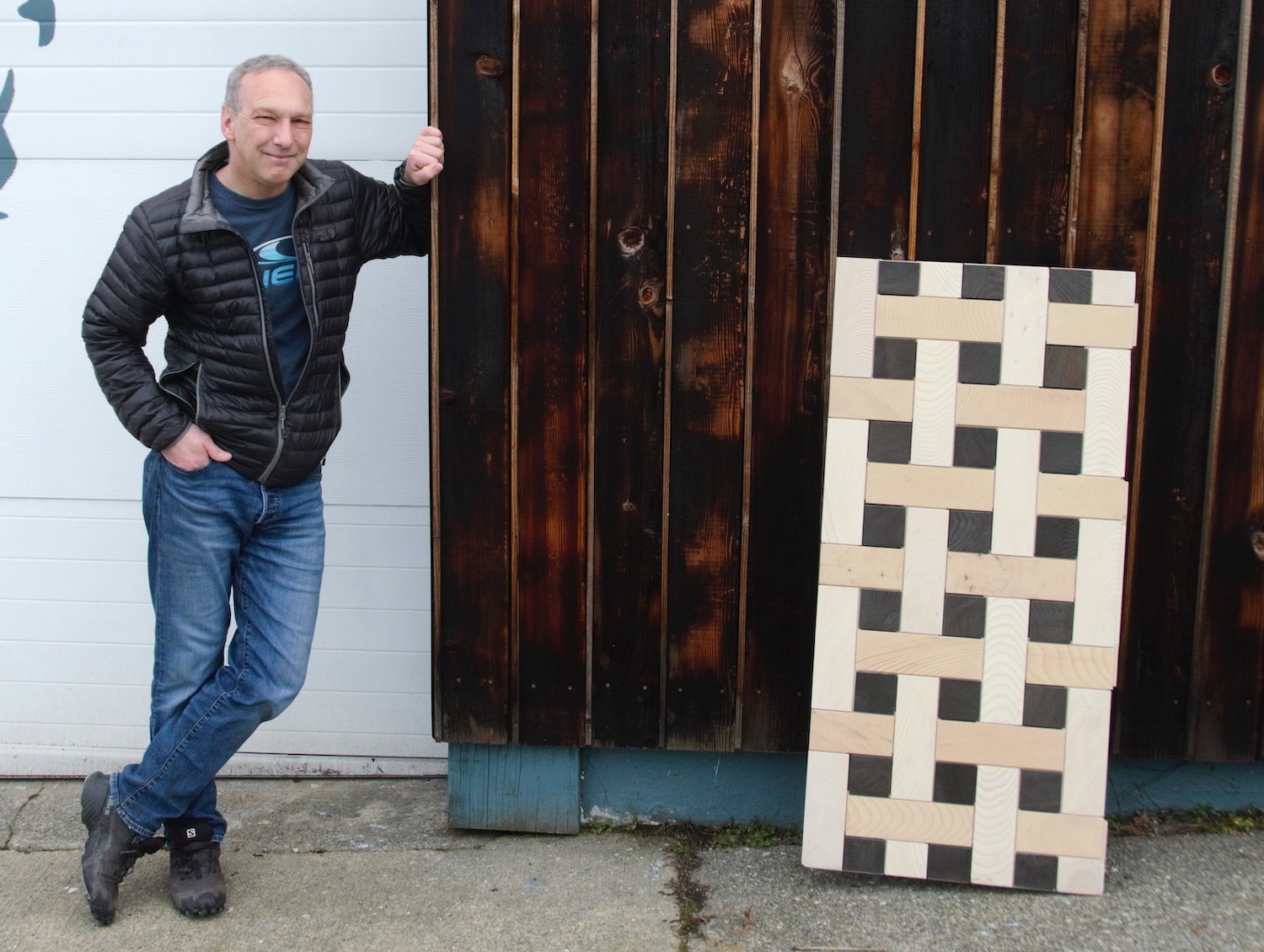
The company is also currently undergoing a third-party-verified Environmental Product Declaration through EPD International and a life cycle assessment. The EPD process is voluntary, but Anson said it’s an important marketing tool as the design and construction industry slowly shifts to sourcing greener materials.
“That process is still underway, but I can tell you, Timber Tiles is going to perform very well,” Anson said. “We sequester carbon in the product, we’re locally produced, and the tiles are designed to go on a wall for 70 years.”
For every hemlock tree harvested, he said, his company can produce 250 boxes of tiles. Timber Tiles also promises to have one tree planted per box sold, through the Vermont-based environmental non-profit One Tree Planted.
“That works out to 250 trees planted for every hemlock tree harvested to make tiles,” he said.
Schmidt has high hopes for Timber Tiles and said he envisions a day when 30 people are employed at a new, scaled-up Port Alberni factory.
This March he joined Anson at Timber Tiles’ booth in BC Wood’s Canadian Pavilion at the Nikkei Architectural and Construction Materials Show, Japan’s largest construction trade show.
Schmidt admitted that changing design preferences for ceramic tiles made using a craft forged over thousands of years — let alone convincing buyers that wooden tiles work in showers — won’t happen overnight.
“We realize this is a long game,” he said.
Marketing is not something Timber Tiles has spent a lot of money on because the company is still honing its message. But as the environmental benefits of wooden tiles appear promising, so too does the emerging trend of biophilic architecture. Derived from the term biophilia, biophilic architecture places connection to nature and natural products at the centre of its design.
Research suggests biophilic buildings can have measurable benefits on humans’ emotional and mental health, as well as productivity in the workplace.
“There’s a reason,” observed Schmidt, “that ceramic tiles are often made to look like wood.” ![]()
Read more: Environment, Urban Planning



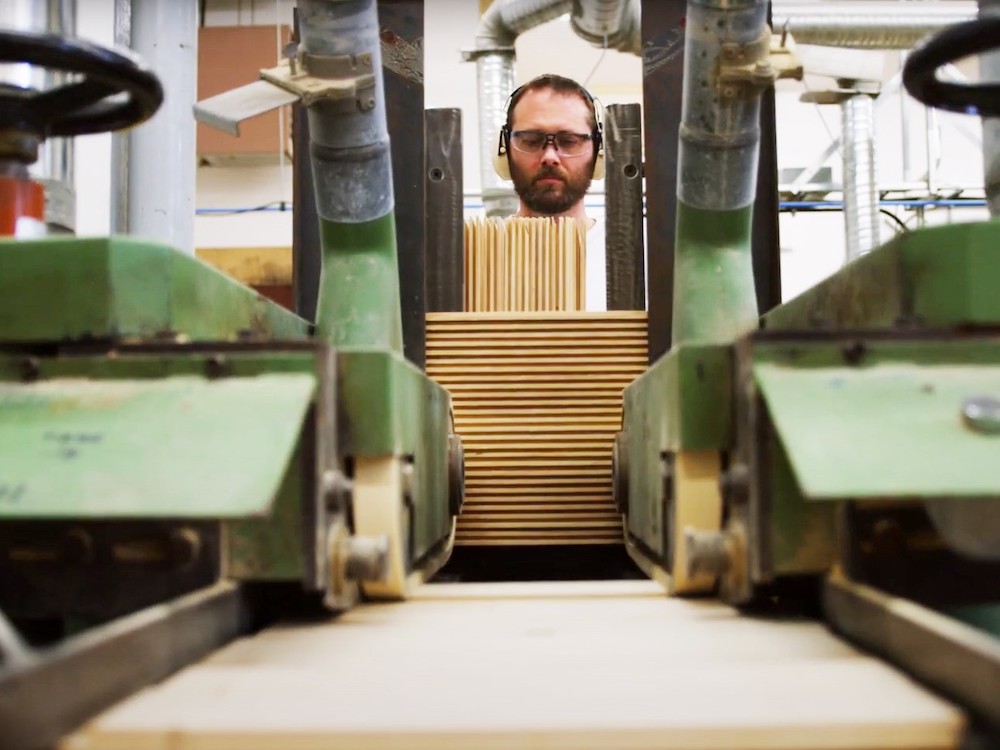
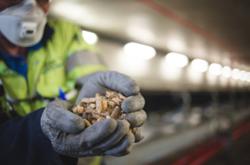











Tyee Commenting Guidelines
Comments that violate guidelines risk being deleted, and violations may result in a temporary or permanent user ban. Maintain the spirit of good conversation to stay in the discussion and be patient with moderators. Comments are reviewed regularly but not in real time.
Do:
Do not: